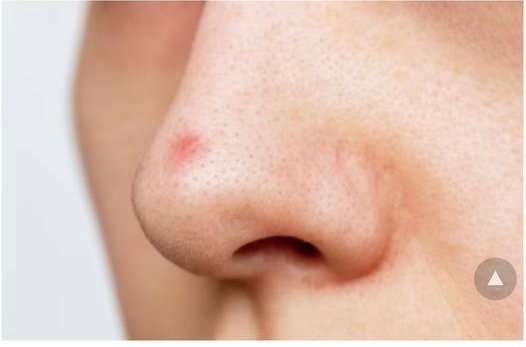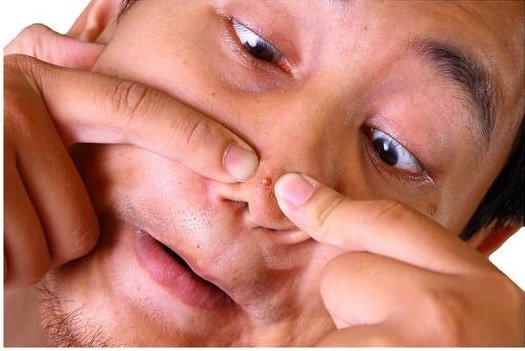What Causes Pimples Inside the Nose?
Let’s start with a quick anatomy lesson. It’s important to understand how differences in the skin inside your nose contribute to the development of a pimple there.
ST10. Why You Keep Getting Pimples Inside Your Nose, and What to Do About It
Getting a pimple anywhere on your face (or body, for that matter) is far from fun — but an annoyingly gross, achy, and tough-to-treat pimple inside the nose may just be the worst of the bunch. Sure, it might not be as visible as a blemish that crops up on your forehead, but its very location can make these bumps super uncomfortable and tough to treat in the way you would address zits elsewhere.

actually a cold sore, as this area of the face (think: around the mouth, lips, and nose) is prone to the cold-sore-causing herpes simplex virus or HSV-1, says Dr. Evans. Staph infections can also cause what people mistake for pimples because the bacteria that cause these infections — aka Staphylococcus aureus — frequently lives inside the nostrils, she adds. That’s totally normal: in fact, about one in every three people have staph in their nose or on their skin, according to the Centers for Disease Control and Prevention.
And even though nose hairs are small, it’s also possible that the stubborn zit-like bump in your nose is actually an ingrown hair (which is usually the result of improper hair removal), adds Dr.
Gonzalez.

What Pimples Inside the Nose
Can Look Like
It’s very possible to get a “typical” pimple inside the nose, which could range from a whitehead to a painful red, cystic ache bump, says Dr. Rodney.
Cysts and pustules are the most common types of nose pimples, as they tend to have more of a bacterial component than other varieties, she adds.
That said, it’s more likely that a blemish in your nose is not a pimple at all, but rather a sign of a different condition, notes Dr. Gonzalez. One option is nasal folliculitis or nasal vestibulitis, which is essentially an infection of those tiny hair follicles found in your nose. It typically manifests as a red, inflamed bump or a collection of red or white bumps at the openings of the nostrils and can be brought on by picking or blowing your nose too often, she explains.
How to Determine If It’s Truly a Pimple Inside Your Nose
Distinguishing between the aforementioned scenarios can be very tricky — even the pros agree. But there are a few key differentiators that might help you figure out if that aching bump is truly a zit or something else. “A classic pimple will usually go away on its own within three to seven days,” says Dr. Evans. And you shouldn’t be dealing with them constantly. If you’re continuing to have reoccurring lesions or bumps, it’s much more likely that they’re being caused by folliculitis or a staph infection, she adds. Folliculitis bumps tend to go away within two to seven days and those of staph infections within one to two weeks.
Cold sores, on the other hand, are the easiest to self-diagnose (and go away within a week). “If there’s both tingling and pain, it’s more likely a cold sore than anything else, especially if you have a history of them in general,” says Dr. Evans.
While you could technically figure all this out on your own, it’s always a good idea to contact your dermatologist for their professional assessment and opinion – especially if you’re continually dealing with any bumps, sores, or legions in your nose.
